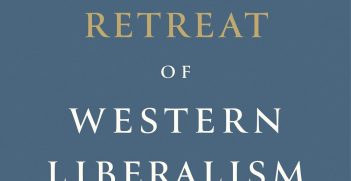Electoral Advertising Gets a Little More Light

Next year, Google will utilise in-house transparency tools within Australia to verify the origins and spending on electoral advertising. Whether this transparency initiative will encourage a heightened awareness of the responsibilities of companies or change the way Australians look at political messaging remains to be seen.
In early 2021, Google will extend its advertising transparency reporting tool to the Australian marketplace. This tool, introduced first in the United States in 2018, has been slowly expanding into new jurisdictions, most recently available during the recent New Zealand election. It constitutes one of the selective areas where Google reports on its workings, providing a simple means of looking at electoral advertising expenditure in a national jurisdiction.
The electoral application of advertising transparency emerges from criticism of social media platforms during the 2016 US national election and investigations into the role of foreign state actors in shaping the outcome of that race. Combined with the Cambridge Analytica scandal, the election highlighted a long-running public trust deficit. If anything, mistrust in election information has only increased since then. Though voting in the 2020 US elections is over, the uneasy transition period is partly due to Donald Trump’s continued use of social media as his post-election battleground. Through social media, his Twitter assaults on officials combine with legal assertions of widespread fraud and are embodied in multichannel requests for fighting fund donations.
During the last three years, “big tech” has faced a wave of inquiries, regulations, and regulatory proposals around the world. Political elites are increasingly grappling with their social and economic power, and platforms themselves are tentatively attempting to tackle their part in the circulation of misinformation. The extension of Google’s voluntary reporting system to Australia stems from the increased regulatory pressure on digital media monoliths like Google and Facebook. Most acutely, this can be seen in the Australian Competition and Consumer Commission (ACCC) 2018-19 Inquiry into Digital Platforms, but also from criticisms from the Australian Electoral Commission during the 2019 federal election. The latter pointed out that Google’s AdWords was hosting advertising that potentially violated electoral law, and that Google Australia was unhelpful to the regulator in its inquiries.
Online advertising constitutes a growing proportion of the electoral advertising expenditure. Because this expenditure is often invisible to electors until they are its specific target, tracking what is happening online becomes a significant component of electoral fairness. Improved transparency and accountability on Google’s part is important, as the company has established a virtual monopoly over search engines with a 95 percent market share; and 47 percent of Australia’s digital advertising share. Facebook maintains a similar tool, Ad Library, also introduced in the US in 2018, and brought to Australia this year in time for the NT, ACT and Queensland elections.
The introduction of an Australian Google transparency system is a modest measure, fitting within the “light touch” approach to political advertising regulation that has long governed in Australia. This has tended to focus on the use of “authorising declarations” with the intent that people who are aggrieved by the content of the communication should address it directly with the advertiser, rather than attempt – mid-election – to introduce legal or quasi-legal forums that regulate electoral advertising content.
Handling political misinformation, and a paradigm shift
In the era of “fake news,” deepfake, and the easy distribution of misinformation, there is clearly an appetite for more forceful regulation of claims made in political speech. Twitter has begun flagging political statements as misleading, and publishes a “civic integrity policy.” However, fact-checking some posts can leave the platforms facing pushback from their own subscribers, both from those directly affected and, more generally, from supporters of free speech.
Twitter has flagged 200 of Trump’s post-election posts. Even the mild rebuttal “Multiple sources call this election differently,” and the provision of links to official sites on the safety of US elections, can be regarded as inappropriate political interference. Twitter extended its ban on overt political ads from the election onwards (as did Facebook) and reportedly stands by its tools for handling misinformation. The company argues only 0.2 percent of all posts have attracted flags, and that additional prompts for subscribers to reconsider “liking” flagged posts are also successful in combating false statements. On both points, these claims seem a tad optimistic, as all posts cannot be treated as of equivalent influence.
Nevertheless, these examples, and the tools that platforms are developing, show that companies are moving slowly to a legal acceptance that they are quasi-publishers with an intermediating role in the communications chain, and are not simply utility telecommunications firms. This represents a paradigm shift in the way they are starting to act, and in how they can be treated in regulatory terms.
Will Australians benefit?
Until and unless more robust regulation occurs, the implications of specific initiatives are likely to be modest. While these can tools promote media literacy, empowering individuals through increased information about the origins of advertising they consume, the actual number of Australians who systematically interrogate their advertising consumption through the Google tool is likely to be limited.
The most value that tools like this provide to political transparency comes through the opportunity afforded to journalists and other “monitorial” organisations. For the wider community, most transparency will come through media reporting partially derived through the intelligent analysis of the data in these tools. Two further questions arise: First, after another disastrous year for traditional media, will there be enough journalists to interrogate these databases? Second, is the data in the system very useful?
Without a regulatory basis to them, there are limits to how electoral regulators can ensure the systems work robustly and are well tailored to the needs of oversight bodies. Researchers in the United States and European Union have criticised transparency tools as being unable to genuinely track the source of funding. Likewise, the Mozilla Foundation has documented bugs and problems in using Facebook APIs to systematically access data.
The limits of these systems will also be seen in the way that advertising expenditures can be concealed through the use of third-party purchasing, as well as through intelligent framing of advertising with political meaning which falls outside strict definitions of the electoral context. Consider the slogan “Without trucks, Australia stops” on the back of a heavy vehicle. Is that an electoral ad?
While these tools can be criticised as limited self-regulation designed to mollify public concerns at corporate power, the initiatives demonstrate how substandard the official transparency laws are around elections in Australia. Donation reporting – something that could and should be done in real time with no lower threshold – follows the election by months (five in 2019), long after its relevance is lost. Queensland’s Electoral Commission shows greater transparency is possible, maintaining the real-time Electronic Disclosure System, a tool that should be rolled out nationally. Only then can money be more systematically tracked through the political system from donor, to recipient, to use. Until then, what the big tech initiatives demonstrate is that the companies acknowledge responsibility for maintaining public trust in elections, albeit in ways which do not impact negatively on their ad-revenue dependent business models.
Dr Peter John Chen is a senior lecturer in Government and International Relations at the University of Sydney.
Associate Professor Mary Griffiths is a visiting research fellow in the Department of Media at the University of Adelaide.
This article is published under a Creative Commons License and may be republished with attribution.





